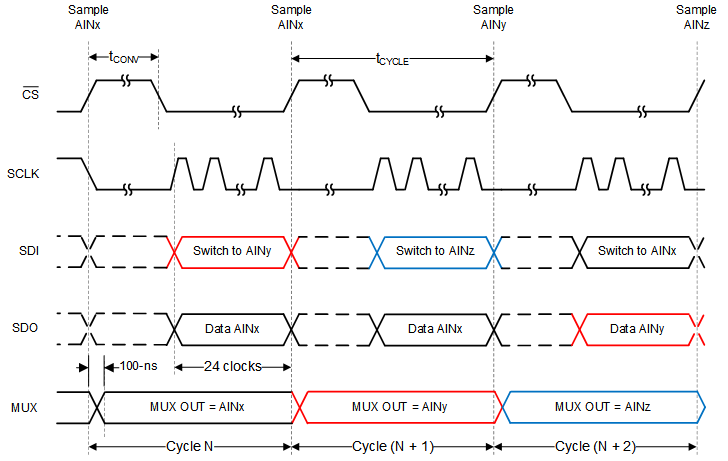ZHCSLR7B March 2021 – September 2024 ADS7067
PRODUCTION DATA
- 1
- 1 特性
- 2 应用
- 3 说明
- 4 Pin Configuration and Functions
- 5 Specifications
-
6 Detailed Description
- 6.1 Overview
- 6.2 Functional Block Diagram
- 6.3 Feature Description
- 6.4 Device Functional Modes
- 6.5 ADS7067 Registers
- 7 Application and Implementation
- 8 Device and Documentation Support
- 9 Revision History
- 10Mechanical, Packaging, and Orderable Information
6.4.2 Manual Mode
Manual mode allows the external host processor to directly select the analog input channel. Figure 6-12 shows steps for operating the device in manual mode.
 Figure 6-12 Device Operation in Manual
Mode
Figure 6-12 Device Operation in Manual
ModeIn manual mode, the command to switch to a new channel, cycle N in Figure 6-13, is decoded by the device on the CS rising edge. The CS rising edge is also the start of the conversion cycle, and thus the device samples the previously selected MUX channel in cycle N+1. The newly selected analog input channel data are available in cycle N+2. For switching the analog input channel, a register write to the MANUAL_CHID field requires 24 clocks; see the Register Write section for more details. After a channel is selected, the number of clocks required for reading the output data depends on the device output data frame size; see the Output Data Format section for more details.
 Figure 6-13 Starting a Conversion and Reading Data in Manual Mode
Figure 6-13 Starting a Conversion and Reading Data in Manual Mode